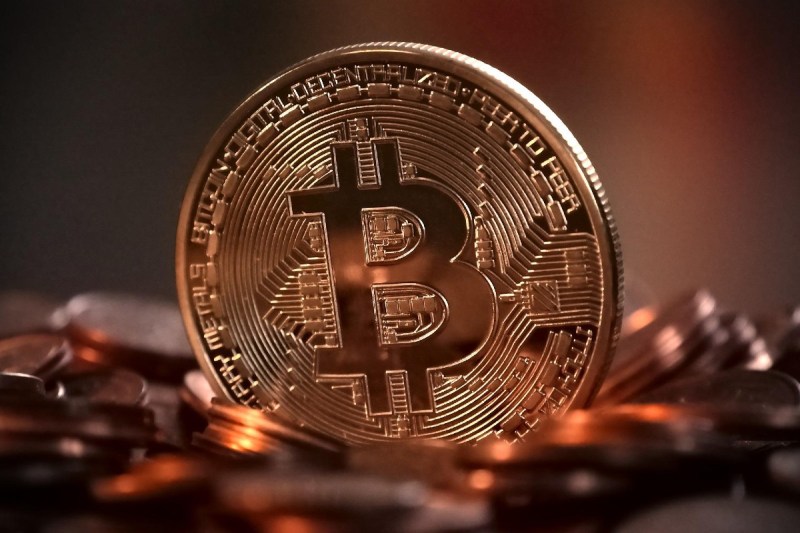You don’t have to understand the cryptocurrency market to realize that digital money is a risky investment. All you need to know, in fact, is how to perform a simple Google search.
Coinmarketcap.com shows that the market capitalization of the total digital coin market sits at about $1.2 trillion in mid-May, a severe drop off from its almost $3 trillion peak last November. The fifth great crypto reset occurred earlier this month with the sudden evaporation of a $40 billion digital token called LUNA that backed the $16 billion stablecoin TerraUSD. In turn, each UST was designed to be worth a single U.S. dollar, “stabilizing” its value. Greed and nascent technology, however, led to UST losing its financial peg, and between May 7 and May 12, that $56 billion disappeared with nary a wisp of smoke.

Though volatile, the crypto market also shows incredible durability, with each reset in the last decade leading to not only price-market capitalization increases but resulting in rapid innovation. While this ingenuity is important for crypto coin’s future, this evolution will have mixed consequences for crypto’s biggest player, Bitcoin.
Bitcoin is generally viewed as the original cryptocurrency and accounts for almost 45% of the marketplace. Bitcoin has also plunged, losing over 50% of its value since its November 2021 high of over $68,000 for a single coin. Today that price is just over $30,000. Though, this is something “experts predicted,” that’s just a fancy way of saying some people were proven right and some proven wrong.
Looking at intense Bitcoin faith and the money invested in the coin make it hard to believe that the digital currency may one day go defunct, but there are still many industry gurus predicting the coin’s doom. While we can’t provide you with a definitive answer here at The Manual, this post will lay out the reasons why the world’s leading cryptocurrency will survive the emerging market’s waves for decades… and the reasons why Bitcoin could go “Poof!” like many of its predecessors.
Why Bitcoin Will Remain
Despite Volatility, Bitcoin Retains Huge Gains
Bitcoin has maintained a $45,000 top for only a few short stretches over the past four months and hasn’t been above $50,000 since last December. Despite being down almost 50% from its November high, the currency has remained at or above its January, six-month low. Bitcoin remains at a similar price level compared to May 2021 and is still more than triple what it was worth in May 2020.
Volatility is nothing new to the crypto world, but in the long view, Bitcoin endures as a lucrative play… for now.
Bitcoin Is the Web3 Currency
Two words might sum up Bitcoin’s (possible) thriving survival: the metaverse. As an operable coin of the realm for everything from online sports betting to Web3 gaming platforms like Roblox, cryptocurrency is a leading means of payment and Bitcoin is the most common mode of exchange.
Though traditional fiat monies will very likely continue to be accepted, bullish crypto investors point to major corporations like Nike, Puma, Gap, and other big brands that, over the last six months, have been at the helm of major pushes to create new imprints and subsequent products in the metaverse. The ascension of these worlds means probable perpetual popularity of paying with altcoins, which will continue to benefit the ubiquitous Bitcoin.
Global Vested Interest
Maybe the biggest argument for Bitcoin’s endurance may be the vested interest already deposited in the coin. From national governments to international conglomerates and corporations down to individual investments, there are a lot of major players in the $580 billion Bitcoin marketplace.
Millions of dollars in pensions, endowments, insurance funds, and corporation capital are divested in Bitcoin. Not only are organizations vested deep into cryptocurrencies, but so are politicians, corporate players, and other private citizens. Government limiting or undercutting Bitcoin means impoverishing its own economic base, which isn’t going to happen.
Even governments who have attempted to thwart crypto coins have found that peer-to-peer exchanges cannot be stopped. Every country that has attempted to shut down exchanges has experienced the emergence of peer-to-peer exchanges that can leverage existing payment networks with transactions hidden in emojis, images, texts, and many other creative digital confiscation methods.
Why Bitcoin May Fail
No True Stabilizing Force
Some people argue that fiat money (today’s traditional currencies) is akin to cryptocurrency in that its only real value is in the faith people put in it. Fiat currency, however, has the backing of its national issuer. “Legal Tender” appears on the U.S. dollar because it’s guaranteed by the federal government. Each nation can stabilize its money with taxes, leveraging public assets, issuing debt in the form of bonds, etc.
Bitcoin (like most other cryptocurrencies) does not have a central bank or a primary organization that ‘issues’ currency or that works to stabilize its value. Bitcoin is strictly aligned to supply and demand, so if demand fails, there is no organizing body that can help to control supply or leverage its value, which leads to the next downside of Bitcoin.
No Tangible Value
Bitcoin’s volatility makes it a very risky currency to invest in. There is nothing backing its value besides an albeit limited mined supply and investor demand.
Even investments like stocks carry tangible value as they (somewhat) reflect real-life revenue from the sale of goods/services. Commodities are even more physical as they represent the raw materials used to produce these goods and services.
The only value that bitcoin has is in somebody else willing to pay a price for it. In that sense, it is like a piece of artwork. But even a piece of artwork has the ability to beautify the space that it occupies. Bitcoin doesn’t even have that.
No Genuine Purchasing Power
Herein may lie the crux: who uses Bitcoin? Blockchain technology was created in order to protect online users’ security and anonymity in making purchases. Besides drugs, guns, and illegal sex work, however, the vast majority of people have shown to be not terribly concerned with online privacy protection beyond that offered by traditional banks.
No matter how many vendors profess to accept Bitcoin, how many people do you know who use Bitcoin (or another cryptocurrency) to purchase goods? The burgeoning, $40 billion/year NFT marketplace relies on crypto for payment, but that is almost exclusively exchanged in Ethereum, not Bitcoin.
Just ask yourself, will you ever use Bitcoin to purchase anything? The answer should make you wary of investing in something you would never consider using yourself.
Proceed With Caution
Despite thousands of opinions, there is no one person or entity out there who knows how or where blockchain-based coins will develop down the road. While they make for a fascinating metamorphosis in the world of money, representing an opportunity for anonymity and legitimacy in online purchases and an alternative to nationally-manipulated money, this is still the Wild West.
Today, Bitcoin represents most of the crypto market, but its efficacy and ultimate survival is still very much to be determined. Make sure to proceed with caution.



